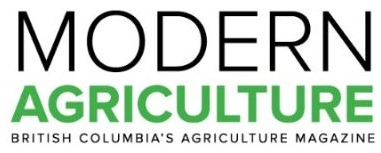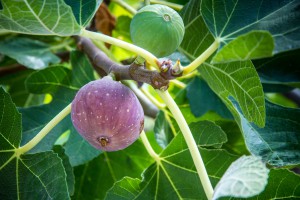Keep the old, but bring in the new!
By Tom Baumann
I have in past issues tackled the influence of pipelines on agriculture land, the reduction of land in the most productive region in Canada, and what climate change could mean to us. This time, I am examining the potential changes that a warmer climate can bring farmers. This is not a discussion of the drawbacks or benefits of climate change; rather, this is a preview of opportunities we might want to think about.
Sure, we can sit by and try to accommodate more rainfall, higher temperatures, and more extreme conditions (depending on who you get your information from). We can then wonder how we are ever going to keep our businesses profitable and healthy, so we can produce the locally grown, high-quality food that Canadians are asking us for. Or . . . we can adapt to a new reality by also considering changing crops. Since I get asked the question “What shall I grow?” nearly once a week, I’ve been exploring some potential candidates. Let me give you a few examples:
-

Table and sake rice is grown in Abbotsford Modern Agriculture Magazine has previously explored the benefits of growing rice in the Fraser Valley. Yes, you read correctly—rice! Masa Shiroki has perfected the art of growing rice in Abbotsford. The location has underlying clay which keeps the water in; it has a good source of water close by; and the land has successfully produced a good crop for a few years now. The rice is used to make sake, which Shiroki produces and sells at his Granville Island Market store. In 2014 he added acreage in south Surrey where natural spring water irrigates 12 acres of rice fields for table rice production. The table rice (labelled “BC RICE”) is now distributed through farmers markets and a few retail grocers in the valley. A production guide exists and is available from the producer for those interested in growing for him. As we get warmer summers, we can expand the range of rice varieties we grow. It’s grown as an annual crop, so winter weather will not usually influence it. Info at artisansakemaker.com
- We have a few small-scale plantings of Haskap (a.k.a. Blue Honeysuckle or Honeyberry), a crop similar to blueberries, with a berry that looks a bit like a cylindrical tube, depending on variety. This crop isn’t necessarily for the fresh market but would be better suited for the processing market with the main attraction being the berries’ high antioxidant values and the potential to harvest this crop before even strawberries ripen. In the summers of 2015 and 2016, harvest was done by mid-June. There is now even a production guide written by a private company to help grow the crop successfully. Strangely enough, the crop is adapted to really cold conditions and in our area we might find sporadic flowering in late summer, again in fall, as well as early blooming in winter—starting in February in some years and going to April, depending on the heritage of the variety. However, in the Fraser Valley, the vigorous growth of these plants is astounding! There is a breeding program in Saskatchewan, Canada. and more information can be found at www.lovehoneyberry.com
- Another one of those strange new crops that does relatively well in the Fraser Valley is Goji (a.k.a. Wolfberry). While we have some small plantations of this crop that botanically is in the same family as tomatoes and peppers, it is also known for its antioxidant effects. In season, which is from July to first frost, it keeps producing flower and fruit and is available at several farms in the Fraser Valley. At this time, however, few varieties exist. The most common method for establishment is from seed which contributes to some variation of fruit size and fruit shape. To this day, I still don’t know how to prune it; however, once we get some fields with varieties established where each plant is similar to the next, we can attempt to do a great job at training the plants. You can find more information here.
-
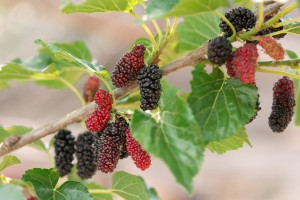
Mulberries thrive in the Fraser Valley Mulberry are largish trees that have in the past been cultivated to host silk worms for the manufacture of textiles. However, in their place of origin, such as Iran, the fruit of the tree is valued as a natural snack and there are different species of them, such as black (when fruit is ripe), red, and white. The trees thrive in the Fraser Valley, but thus far no one has tried their commercial luck with them outside of my four trees. The fruit looks like blackberries and when ripe and dried are very sweet and quite palatable. They grow well up to hardiness zone 7, which we are trending to even in the Fraser Valley.
- Pawpaw, a smallish tree, has been successful in the Fraser Valley in my garden for about six years now, and I had a few fruit off them as well. The fruit tastes a bit like papaya, except the texture is a bit softer. In the past two years they had plenty of time to ripen and the fall golden foliage is spectacular. The tree is quite hardy in very cold winters; it’s just a matter of finding proper pollinators to set more fruit in our climate. As I acquired information, I found it thrives in wet conditions. So, hey, there is something for our wet winters! However, I am convinced it will do better in decently drained soils. Incidentally, in Australia, they call papayas pawpaw. More info here.
-
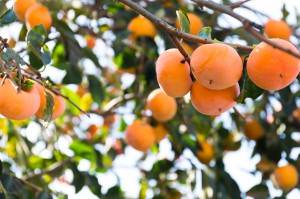
There are many health benefits associated with persimmons Persimmon, which grows very well in our climate, is quite winter hardy as well. My tree produced hundreds of fruit reliably every year. The foliage is a beautiful yellow in spring and again prior to leaf drop in fall. The blooms are a very nondescript green but the fruit, with its deep orange colour, is something to behold. There are many health benefits associated with persimmons. You can find more info here.
-
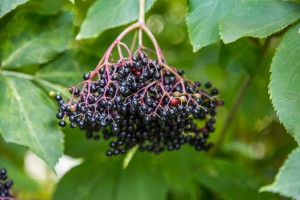
The elderberry is known for the liqueur made from the fruit Elderberries come in red, white and black forms. The bushes grow at an incredible rate in the Fraser Valley and the fruit needs processing before it is digestible. With many beneficial effects attributed to elderberry, it is more commonly known for the farm wives of yore who made their own liqueur from the fruit. An extract made from the flower has even been used to treat ailments. Info can be found here.
- Figs are grown all over the Fraser Valley and the Lower Mainland and are known for their drought tolerance and their root system which rarely needs fertilizing. One to two fresh crops can be taken a year; however, the plant is quite susceptible to winter cold. I brought in a few more cold-tolerant varieties and they seem to thrive quite well, so I planted them out in the middle of the field to get exposed to the harsh winter winds, to see if they would make it through. In colder areas, protection is necessary. Some like the fruit fresh from the tree; I like them dried and powder sugared. Want more info?
So, if we can grow all of these crops outdoors, why do we not see large plantings as alternate crops to what we normally grow in our area? That is a rather difficult question. We can likely grow the plants, but what do we do with the crop afterwards? One needs to assess the market potential and what would happen if we have too much fruit on the market all at once. Is the market elastic enough to absorb a large volume? Is there a processor that will buy the crop at a decent price? Which insects and diseases do these crops battle? One needs to exercise due diligence with a business plan which includes cost comparison vs. returns, labour and consumables costs, and a marketing plan with an exit strategy.
But wouldn’t it be great if we could diversify further—if we could produce most everything we need for a healthy local diet. Right now, I am just enjoying a papaya that was grown in the greenhouse at the University of the Fraser Valley. It was harvested ripe and the flavour is incredible; it reminds me of the strawberry papayas from the farmers market in Kona, Hawaii. Is it cost effective? Let me explore that a little bit further and crunch the numbers, then I’ll know. In the meantime, there’s nothing wrong with the delicious fruits and vegetables we produce in BC now. Let’s just add to the menu!
